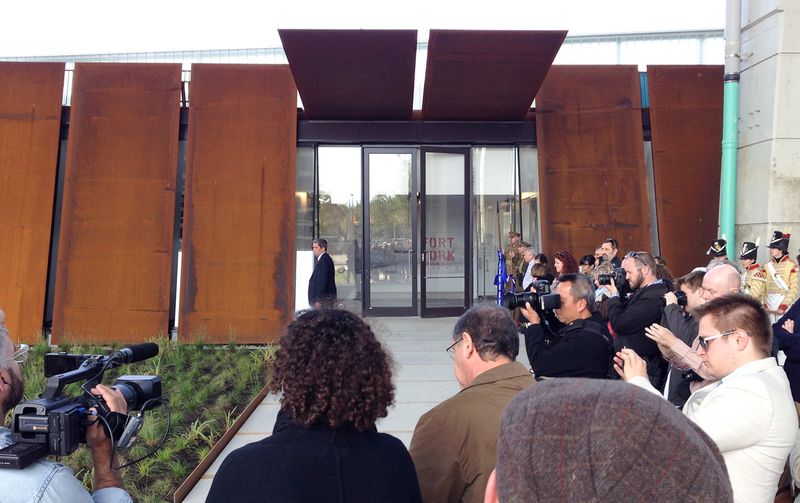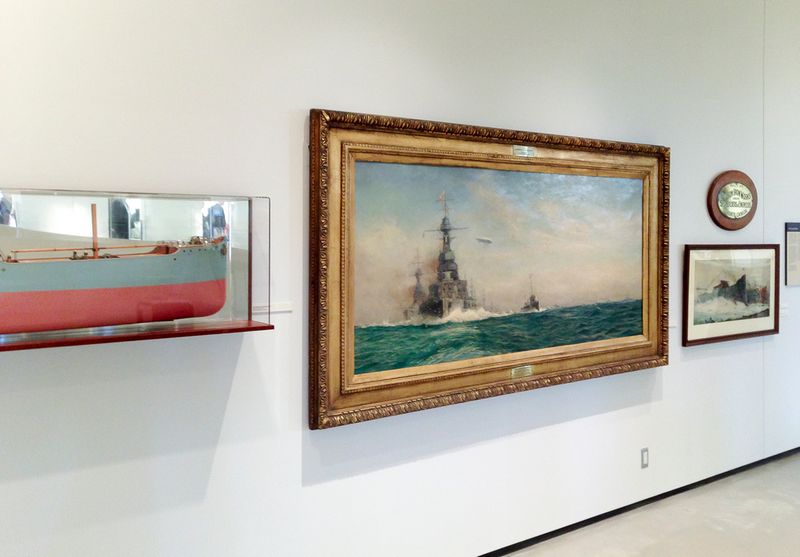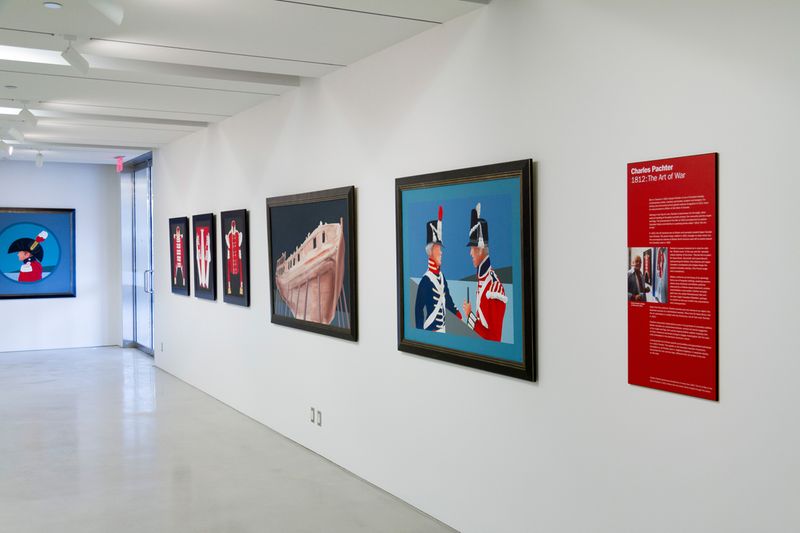Toronto is a relatively young city, but it is home to a number of historic sites worthy of a visit, including a historic jewel in Toronto’s crown—Fort York National Historic Site. Enclosed by two bridges to the east and west, a highway to the south, and rail lines along the north, this national historic site receives little attention unless functioning as a backdrop for festivals or concerts, and competes with the city’s highly visible tourist landmarks such as the CN Tower, Casa Loma, AGO, and Royal Ontario Museum. This will now change: A long time coming, the new visitor centre has opened its doors to the general public.
Until its permanent exhibits are installed in 2015, the visitor centre is hosting an exhibition centred on the First World War. For this exhibition that commemorates the centenary of World War One, the city’s heritage team dipped into a treasure trove of rarely seen artifacts and fine art, including an oil painting by renowned English marine artist, W.L. Wyllie, depicting the surrender of the German High Seas Fleet in 1918, posters from the Government of Canada pitching Victory Bonds, and uniforms worn by Canadian men and women during the Great War. Also on display is the painting series 1812: The Art of War by Charles Pachter, one of Canada’s leading contemporary artists, best known for his bright, often satirical handling of Canadian symbols. In October 2015, the historic Magna Carta will travel to Toronto for a much-anticipated exhibition at the centre.
With its eventual completion and serving as a stop for high profile travelling exhibitions, the visitor centre will raise awareness of Fort York’s importance within Canada’s heritage and Toronto’s founding story and, hopefully, cease to function as a mere backdrop.
- Fort York Visitor Centre
- Fort York Visitor Centre: W.L. Wyllie
- Fort York Visitor Centre: Charles Pachter






